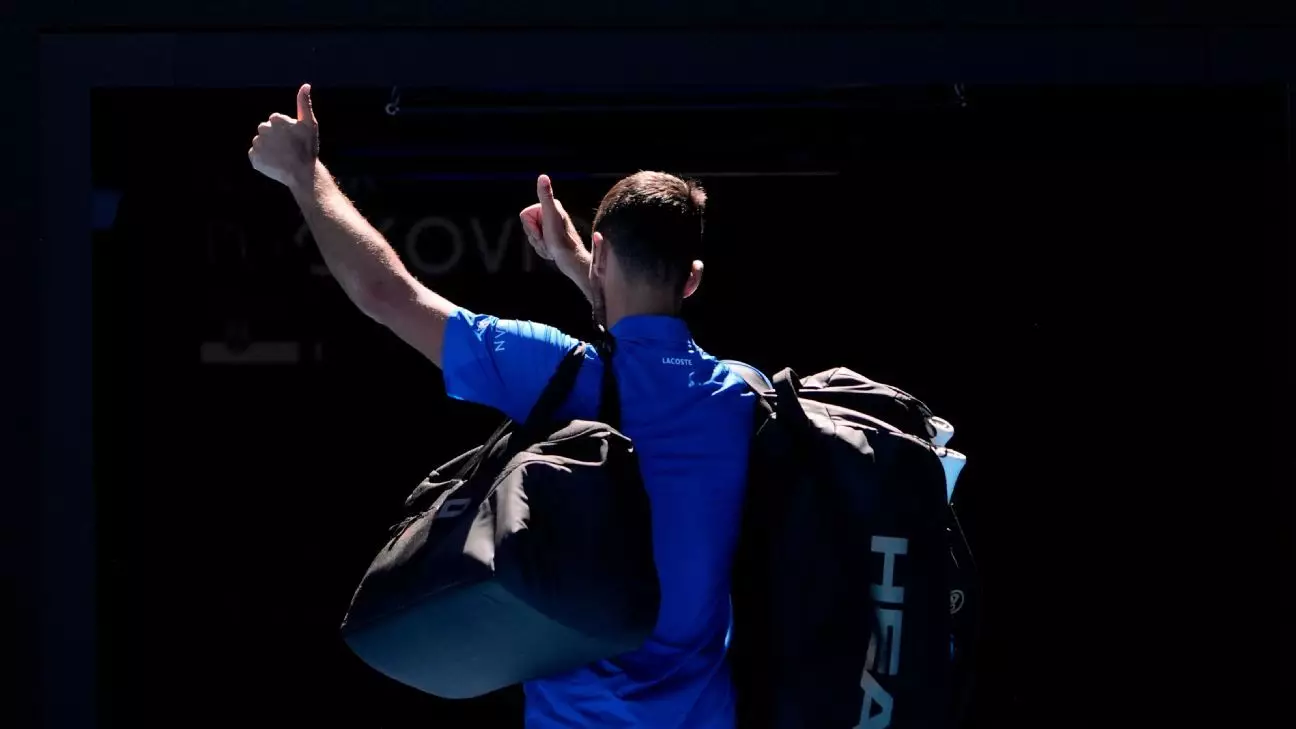In the high-stakes world of professional tennis, injuries can drastically alter the course of an athlete’s career. Novak Djokovic, revered for his remarkable prowess on the court, faced such a reality at the recent Australian Open. The twenty-four-time Grand Slam champion found himself in an unfortunate situation during his semifinal match against Alexander Zverev, forcing him to retire due to a muscle tear in his left leg. This unforeseen circumstance not only ended his quest for an 11th title at Melbourne Park but also raised important questions about the nature of injuries in high-level sports and the mental fortitude required to cope with them.
Djokovic’s pedigree as a tennis player is unparalleled, yet his resilience was put to the test on a day that began with high hopes. Initially, his performance showcased the grit and determination synonymous with his brand. However, as the 81-minute first set unfolded, it became evident that the heavy strapping on his left thigh was not merely a precaution. Despite valiantly competing, the muscle strain worsened, turning his uphill battle into an insurmountable challenge. His subsequent retirement sent ripples through a capacity crowd at Rod Laver Arena, demonstrating the often unseen friction between athlete expectation and physical limitation.
Tennis, unlike many team sports, places immense pressure on individual athletes during Grand Slam events. The anticipation of the crowd, the weight of expectations, and the desire to overcome adversities create a potent mix that can lead to both triumph and despair. Djokovic’s withdrawal was met with a chorus of boos from fans who paid significant sums for an unforgettable viewing experience. This reaction points to a deeper issue within sporting culture—how fans perceive the line between competition and a player’s physical well-being.
In addressing the audience, Zverev advocated for respect towards injured players, emphasizing that the expectation of dramatic matches should not overshadow an athlete’s health. His recognition of Djokovic’s past triumphs despite injuries—winning previous tournaments while physically compromised—highlights the paradox athletes face: the pressure to perform against all odds versus the fundamental need for self-care and recovery.
Djokovic’s current situation is not an isolated incident; rather, it reflects a broader trend in tennis where players face increasing injury challenges. His recent muscle tear marks the second time in a year where he has had to withdraw from a Grand Slam event due to physical issues—the first being a knee injury at the French Open. This repetition raises eyebrows and fuels speculation regarding whether the rigorous demands of the sport are taking a greater toll on athletes, particularly those at the pinnacle of their careers.
As Djokovic himself remarked, he’s observed a troubling pattern when it comes to injuries over the last few years. Discussing his mental state, he stated that while he does not intentionally approach tournaments with anxiety about potential injuries, the statistics are certainly concerning. This candid acknowledgment starkly contrasts the cutthroat image typically associated with elite sport, where mental toughness and invincibility are expected traits.
As Djokovic contemplates his future and any potential recovery timeline, his philosophy remains steadfast—dedication to the sport and a commitment to overcoming obstacles. His plans to consult with medical professionals upon returning to Europe illustrate a proactive approach to rehabilitation, vital in a sport where physical capabilities are paramount.
The injury raises pertinent questions about athlete longevity and the future trajectory of their careers. For Djokovic, a player with an unyielding drive and aspiration to extend his legacy, the coming weeks are crucial. The upcoming Doha tournament looms on the horizon, and it remains uncertain whether he will participate. The decision will hinge on his recovery speed and his desire to return to the court.
Djokovic’s recent withdrawal illuminates a poignant moment in professional tennis—a reminder that behind every champion’s facade lies the vulnerability of the human body. With injuries becoming more common in a sport characterized by intense physicality, it is imperative that both fans and athletes alike cultivate an understanding that prioritizes health and well-being above all else.


Leave a Reply